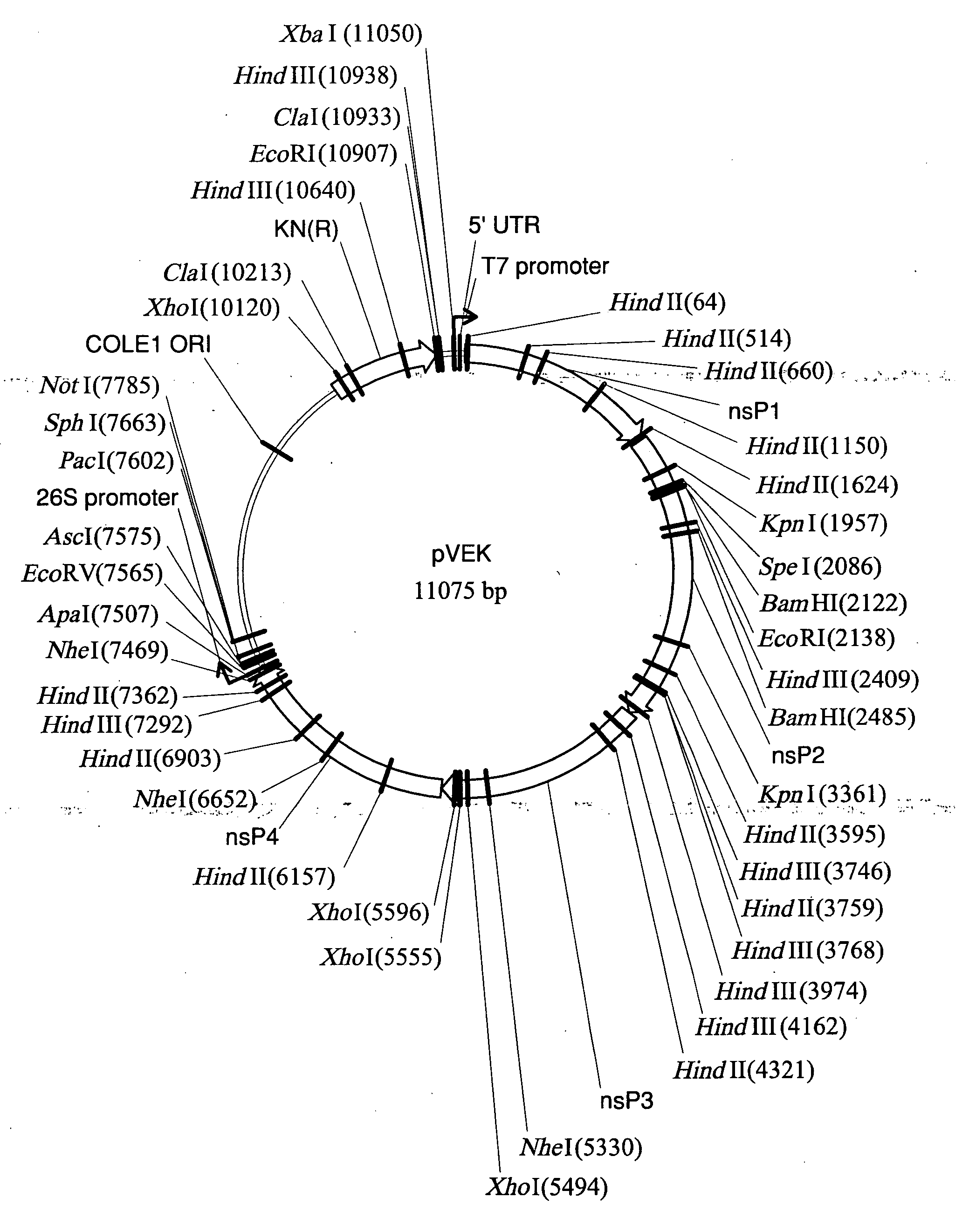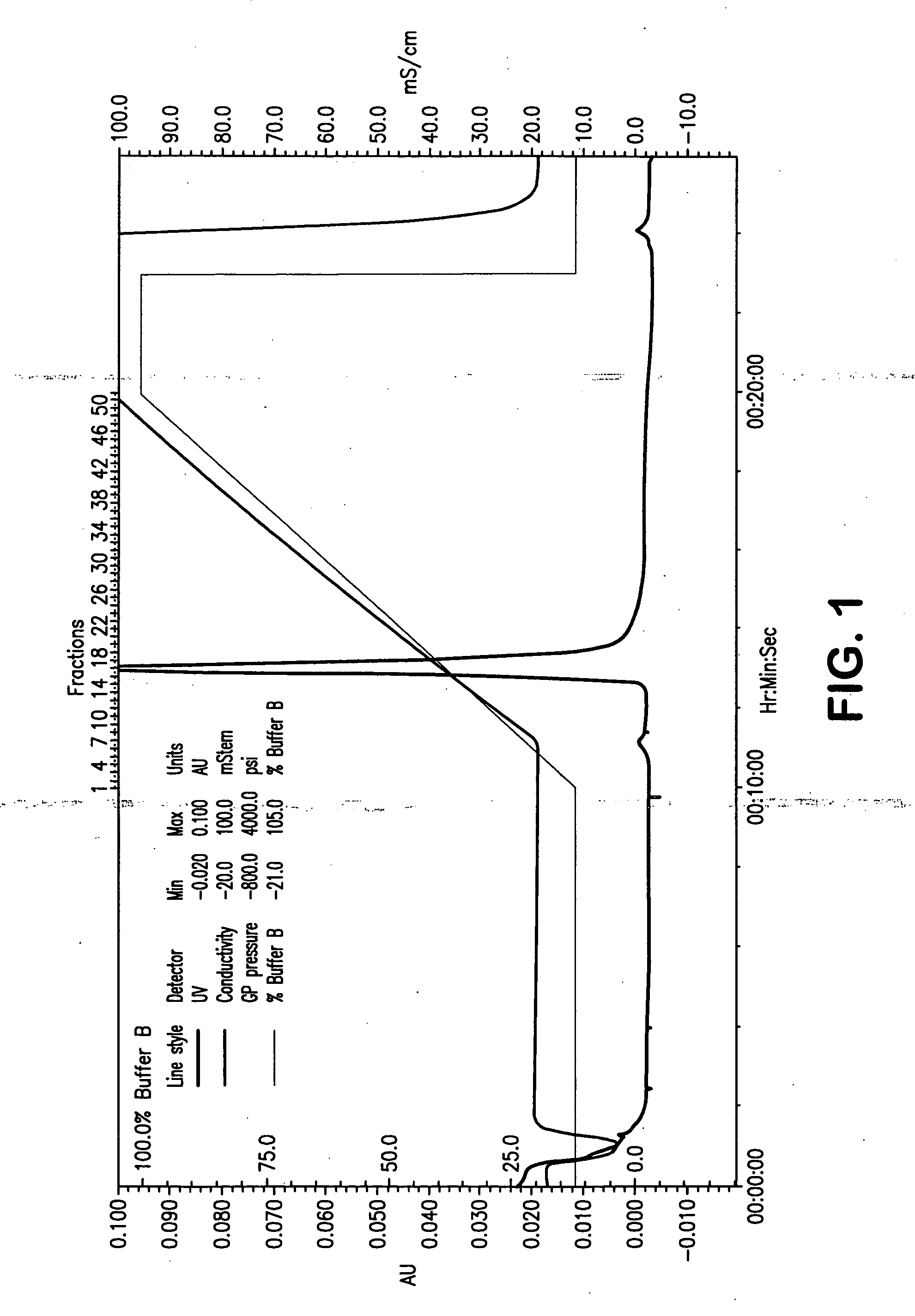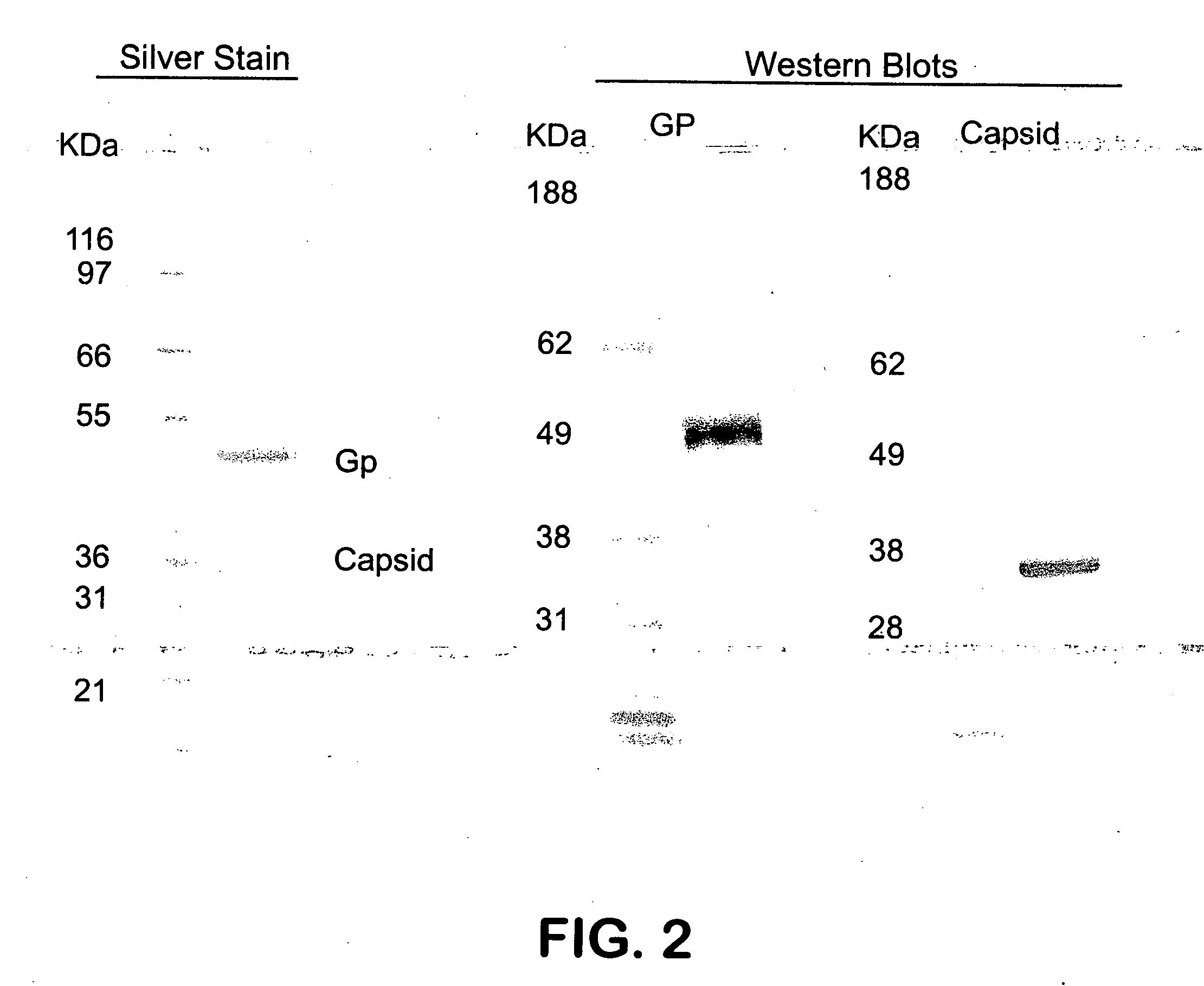TC-83-derived alphavirus vectors, particles and methods
a technology of alphavirus and vector, applied in the field of recombinant dna technology, can solve the problem of not being able to predict whether it can serve as an effective genetic background for the replicon particle system, and achieve the effect of reducing protein expression, maximizing expression, and reducing such expression
- Summary
- Abstract
- Description
- Claims
- Application Information
AI Technical Summary
Benefits of technology
Problems solved by technology
Method used
Image
Examples
example 1
Production of TC-83 Replicons
[0084] A replicon plasmid based on the TC-83 strain of VEE was produced from a TC-83 infectious cDNA clone, pVE / IC-92, obtained from the Centers for Disease Control and Prevention. The sequence of this clone was published by Kinney et al. (1993) J. Virol. 67:1269. The pVE / IC-92 sequence differs from the TC-83 virus genomic sequence by the presence of an Ala-Val mutation at E1-119 (a cloning artifact introduced by Kinney) and three silent mutations in nsp1 (at 1613A→G; at 1616C→A; at 1619T→C) purposely introduced to distinguish the clone-derived virus from the genomic sequence. The present inventors have identified an additional silent mutation at E1 position in the pVE / IC-92 clone. By “silent” is meant that the change in the nucleic acid sequence does not cause a change in the amino acid that is encoded by that nucleic acid sequence.
[0085] The TC-83 replicon vector (“pVEK”) was produced by first transferring an expressible sequence encoding kanamycin r...
example 2
Production of TC-83 Helpers
A. DNA Helper
[0090] A TC-83 DNA helper was constructed from pCDNA-VSp, which is described in U.S. Patent Publication No. 2003-0119182, Example 5. pCDNA-VSp is a DNA helper in which the VEE3014 VEE structural proteins are expressed directly from a CMV promoter. The glycoprotein gene sequence containing the TC-83 mutations was digested from pVE / IC-92 using SpeI and ScaI restriction enzymes, and ligated into pCDNA-Vsp which has been digested with the same enzymes. The introduced mutation at E1-119, which was noted but uncorrected by Kinney et al. (1993) J. Virol. supra as an artifact of the cDNA cloning to produce VE / IC-92, was repaired using the quick change site-directed mutagenesis kit (Stratagene, LaJolla, Calif.) and primers TC83E1119F (GCCTTGCGGATCATGCTGMGCATATAAAGCGC) (SEQ ID NO:2) and TC83E1119R (GCGCTTTATATGCTTCAGCATGATCCGCAAGGC) (SEQ ID NO:3) to generate pCDNA-TC83r.
[0091]E. coli cultures transformed with the DNA helper plasmids were sent to Pur...
example 3
Packaging of TC-83 Replicon with Various Helpers
[0094] VEETC83 replicon particles (VRPs) were produced by co-electroporation of a TC83 replicon RNA (expressing the HIV GAG gene), and one or more helper nucleic acids (see Table 1) into Vero cells. Following electroporation, the cells were seeded into 2 T300 flasks containing OptiPRO® (Gibco, Carlsbad, Calif.) and incubated for approximately 18 hours. The media was removed from each flask, and 10 ml of a 0.5 M salt wash solution in 10 mM sodium phosphate buffer was added to each flask and incubated for approximately 5 minutes at room temperature before collection and filtration. VRP were titered by incubating serial dilutions of the salt wash and / or the collected medium on Vero cells in 96 well plates overnight at 37° C. and 5% CO2. GAG VRP infected cells were detected using an anti-GAG indirect immunofluorescence assay on Vero cells fixed with MeOH, and titers were determined by counting GAG positive cells at a specific dilution. Si...
PUM
| Property | Measurement | Unit |
|---|---|---|
| ionic strength | aaaaa | aaaaa |
| ionic strength | aaaaa | aaaaa |
| ionic strength | aaaaa | aaaaa |
Abstract
Description
Claims
Application Information
 Login to View More
Login to View More - R&D
- Intellectual Property
- Life Sciences
- Materials
- Tech Scout
- Unparalleled Data Quality
- Higher Quality Content
- 60% Fewer Hallucinations
Browse by: Latest US Patents, China's latest patents, Technical Efficacy Thesaurus, Application Domain, Technology Topic, Popular Technical Reports.
© 2025 PatSnap. All rights reserved.Legal|Privacy policy|Modern Slavery Act Transparency Statement|Sitemap|About US| Contact US: help@patsnap.com



